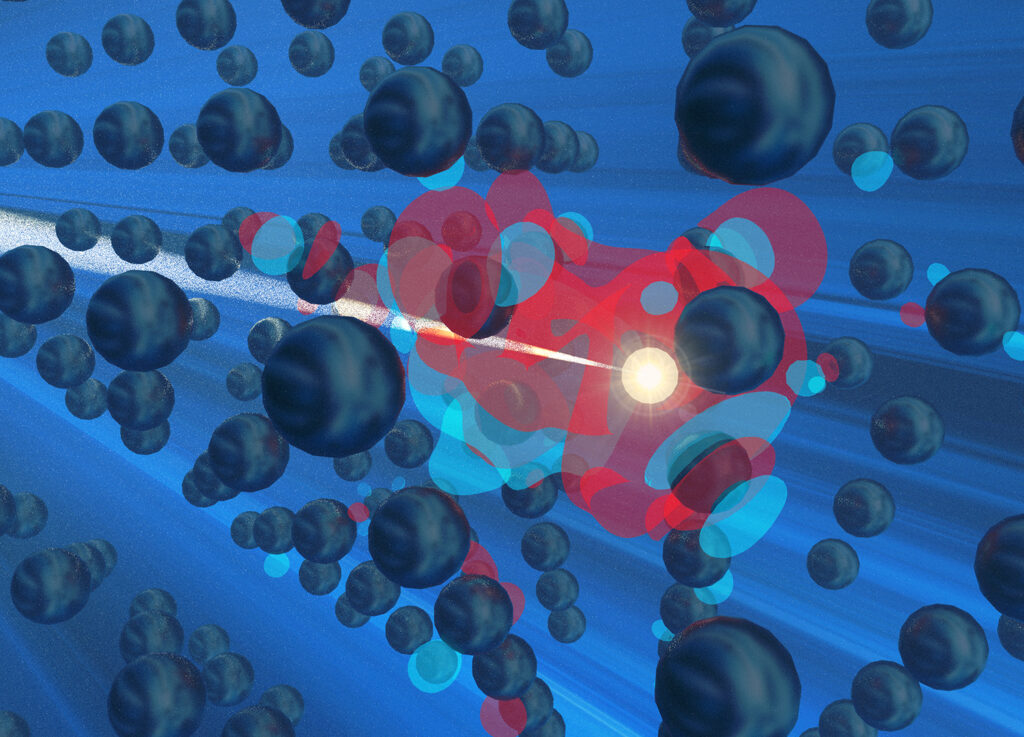If fusion energy is the work of caging an artificial star, one of the big challenges is keeping the box intact. The inner wall of a fusion machine can erode and weaken when hit by fast-moving hydrogen and helium ions from the fusion plasma. When these ions hit and penetrate the walls, they lose energy through collisions, causing atom displacements in the wall materials and sometimes ejecting atoms entirely—a process known as sputtering. The more of this material damage, the more frequently components need to be replaced.
Evgeniia Ponomareva, a PhD candidate specialising in computational material science at Aalto University, studies the influence of light ion impacts on sputtering. She explains that fast fusion ions lose energy in two ways when they strike the machine’s walls: through collisions with the heavy nuclei of tungsten atoms or by interacting with the clouds of light electrons surrounding those atoms.

“For light ions like hydrogen and helium, the collisions with electrons are the dominant contribution to energy loss over a large range of velocities”, Ponomareva says. However, those collisions are complex to model.
As hydrogen and helium traverse the tungsten wall, they lose energy by displacing the electrons that surround the tungsten nuclei in dense clouds. Where understanding a collision between a speeding ion and a tungsten nucleus takes just one step, using the tricky laws of quantum mechanics to determine the effect of electronic excitations requires significantly more computational power due to the complex laws of quantum mechanics.
Marconi supercomputer
Enter the Marconi supercomputer in Bologna, Italy, which is available for researchers in the EUROfusion consortium. With a total computing power of about 12.5 petaflops per second, Marconi enables researchers like Ponomareva to run computer modelsthat would take too long on the local machines.
EUROfusion is currently collaborating with Cineca and ENEA to develop a next-generation High Performance Supercomputing infrastructure that will succeed Marconi. But for Ponomareva’s research, Marconi was still up to the challenge.
Days of modelling
Achieving high-accuracy predictions comes at a computational cost, Ponomareva explains: “Simulating the movement of a hydrogen ion with an energy of a thousand electron volts over just a few nanometres can require around a thousand computing cores! And it still takes a few days to complete. Therefore, we need to use our resources wisely to get accurate results in an efficient way.”
The effort is paying off. In their recent scientific paper titled Local electronic excitations induced by low-velocity light ion stopping in tungsten, the PhD candidate and her colleagues demonstrated that quantum simulations can accurately calculate electronic energy losses and reveal the underlying physics. Their next step involves taking their detailed calculations on Marconi and feeding those to a computer model that can predict the amount of tungsten that gets sputtered by the ion impacts.
“We are currently working on a follow-up paper that links these calculations to sputtering predictions for how much tungsten gets sputtered out of the wall material,” says Ponomareva. “The model accounting for the electron-ion interactions predicts around five times less sputtering than previously estimated when electrons were not considered. Reduced sputtering would certainly be a positive outcome for the material longevity of future fusion machines!”
